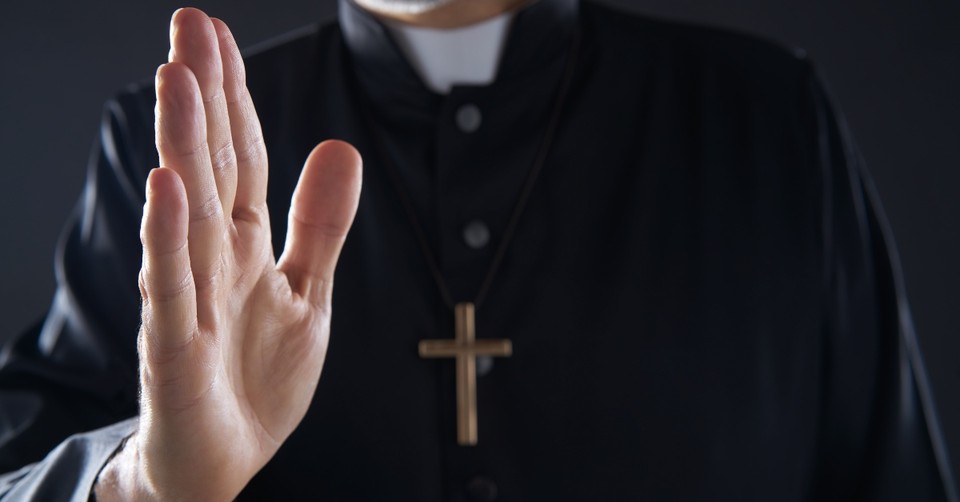Why Do Catholics Use the Sign of the Cross?

The sign of the cross has been used by Catholics for thousands of years. Its roots in the early church have been handed down through the generations to signal intent in blessing and receiving through prayer.
Though simple in action, the sign of the cross holds great significance in meaning and heart for Catholics today, just as it did in the early church.
The sign of the cross is an action taken after saying a prayer. Catholic.com explains the action as,
The sign of the cross was made simply with the fingers (the index or the thumb) on the forehead or lips or breast (as Latin-rite Catholics do at the beginning of the Gospel lesson) or with the whole hand over the torso. There are slight differences in how it is made between the various rites of the Church, but they are all legitimate. Those who are in holy orders bless by making the sign of the cross in the air toward the persons or things to be blessed, but lay folk bless others only by using their finger, usually the thumb.
This action is much like the folding of hands in prayer or the lifting of one’s head during conversation with God. Physical action in prayer is sacred in the intimate and personal relationship of each believer and God.
What Does the Sign of the Cross Mean?
This holy act has been handed down through the tradition of many generations. Catholics have been taught that St. Basil shared that the sign of the cross was handed down first from the Apostles of Christ.
St. Cyprian taught in the third century that the sign of the cross was a reference to Christ’s redemptive death on the cross. It has become tradition in blessing others, often with holy water or oil, to do the sign of the cross upon a person as to signal in action the intent of the heart within.
Taking the action of the sign of the cross and declaring outwardly in voice or spirit, “in the Name of the Father, the Son, and of the Holy Spirit, amen” rests the prayer just offered forward in faith.
Lutherans use the sign to share, “These interpretive signs proclaim the gifts that are given in the promise of God in Baptism...The sign of the cross marks the Christian as united with the Crucified.”
To Catholics and Christians who use the sign of the cross, it is a way to outwardly express upon a person a blessing or anointing through the Holy Spirit.
Why Do Catholics Use the Sign of the Cross in Mass and Everyday Life?
Catholics use the sign of the cross daily in Mass and prayer. Not merely saying, “amen” but sending the holy prayer before the Father, the Son, and the Holy Spirit in declaration and action.
Mass is a service filled with prayers, tradition, and remembrance of the Father, Son, and Holy Spirit.
Mass is an intimate service of connecting with God, and the use of the sign of the cross outwardly recognize each Person of the Trinity, and lastly confirms within the believer. It is a holy service with a holy action of uniting with the Lord.
Can Non-Catholics Use the Sign of the Cross?
Non-Catholics can also use the sign of the cross. It is widely and frequently used by Lutherans, Episcopalians, and other denominations as well. Ultimately those who believe and confirm in their souls that Jesus is Savior and Lord enter into the body of believers.
Just as the folding of hands is an action in coming forward in prayer to the Lord, so is the use of the sign of the cross. It is not solely to be used for a certain group of Christians but is open to all who sincerely find more connection to the Lord through doing so.
Those who are not Catholics may find benefit in learning more about the sign of the cross. Not merely taking such a movement as a performance, but in understanding what it truly means.
1 Samuel 16:7 reminds us that, “For the Lord sees not as man sees: man looks on the outward appearance, but the Lord looks on the heart.”
The Lord sees the things that we choose to do in view of the heart, not just in the physical outward ritual. Those who seek to use such a sign would benefit from coming into a greater understanding that in carrying out the action, they should in their hearts come into agreement and posture before the Lord.
What Can We Learn from This Tradition?
Much can be learned from the use of the sign of the cross. Paul spoke in 1 Thessalonians 5:16 that believers should pray without ceasing, and we should recognize that such prayers are not memorized chants to flow from our mouths, but are prayers that are sincere and connected to the heart of the Creator of all.
When using the sign of the cross we should also align our hearts in such a posture that we are invoking and interceding before the Father, the Son, and the Holy Spirit. We are connecting with the Holy Trinity outwardly and inward in soul.
May this day connect your heart with the reminder to recognize that your prayers go forward to the Father, the Son, and the Holy Spirit, but also that your prayers are heard and cherished.
Sources
ELCA.org, Why Do Lutherans Make the Sign of the Cross
Britannica.com, Sign of the Cross
Catholic.com, Sign of the Cross
Photo credit: ©Getty Images/LUNAMARINA


Originally published June 22, 2020.







